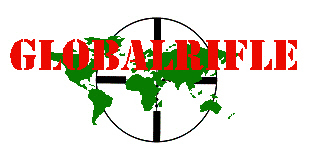Having been the European
distributors of Shepherd scopes for the past seven years, we would like to summarize our experiences of its application
to shooting in the UK.
TARGET SHOOTING
Using standard (supersonic)
ammunition, the Shepherd scope is perfect for shooting ETR targets (electronic targets- reactive) which are on the British
Military Field firing ranges. These come in standard man size, small, crouching
man and “Hun’s” head. If
you use the 9 inch circle for the headsize you can knock them down, without fail, to 500 yards plus, using the 22LR Shepherd
scope. I personally use a Ruger 10/22 with
a 50 round magazine (made by MGW in Florida).
You
can also shoot them out to 1000 yards with the corresponding full bore scope for your chosen calibre. These scopes have 18 inch circles, and the chest size on the ETR targets is 15 inches. I find that, so long as you can see a bit of light either side of the targets you will be spot on.
You
can also pick which circle on the reticule fits the black of the bullseye target and set that for elevation. You can then set the cross hairs in the centre of that circle to give you a front and back sight.
Using
the cross hairs in the centre of the 1 m.o.a. zeroing circle, this also gives you a front and back sight scenario. When zeroing Steyr Scout rifles for customers in .308, fitted with Shepherd V2s (a popular choice), using
Hornady 150 grain Light Magnum ammunition at 100 yards, I regularly achieve 3 shot groups through the same hole only 2/1000ths of an inch bigger than the bullet size.
HUNTING
For hunting red deer,
the centrefire reticule with 18 inch circles is excellent, and very popular.
An average red deer is 18 inches from shoulder to brisket. The optics of the Shepherd
are incomparable. Quite a few Scottish stalkers, for example, are using the Shepherd
for hind culling. A typical method is that 5 or 6 stalkers get together and get
as close as possible to the cull beasts, say 100 to 150 yards.
They then, at a set signal, all open fire at the same time. When the remaining deer move off, they may well be still within range for the stalkers,
enabling them to take another shot at 200-250 yards. However, after
that, the “Shepherd equipped” stalkers come into their own. They
can pick off any wounded deer at up to 1000 yards, which saves an awful lot of running about, not to mention time.
For
daylight foxing on an open hill or large
field, the Shepherd is perfect. Side on, a fox from shoulder
to “butt” is usually about 18 inches, the same size as the circle on the Shepherd centrefire reticule. From nose to shoulder it is 9 inches,
so you can use half an 18 inch circle. An average sized fox approaching you is
about 9 inches from the top of its head to its chest. Again, fit it in half of a circle and
fire.
Using
a .22 with subsonic ammunition needs very slight adjustment, as the Shepherd 22LR is calibrated for standard ammunition. Just remember that the subsonic bullet drops a little bit more than a supersonic bullet. Easiest way is to fit a slightly smaller target into the 9 inch circle, e.g when shooting a pigeon side on, range it without the neck and tail and fit it into the 9 inch circle,
and your shot should be dead on, providing, of course that you have an accurate rifle, accurate ammunition and a steady aim.
MILITARY APPLICATION
The Shepherd used in conjuction
with the Angle Cosine Indicator (ACI), which we also distribute, and
the simple wind doping method used by the Author, takes care of every parameter you need to consider out to 1000 yards.
Example 1)When aiming at hostile target high up on a tower, or top of building , you find he fits the 600
yard circle on your Shepherd. You are shooting at a steep angle, so you glance
at your ACI which gives you the Cosine reading of 50 (see picture), so use 50 % of normal elevation, hence
you use 300 yard circle on your Shepherd to shoot.
2) Same scenario
but with 10 m.p.h. wind from 90 degrees, so 600 yards = hold
off 6 minutes on top grid of Shepherd reticule.
3)
If there are multiple targets at the same range, you can move the circles on the reticule across to allow for this.
It makes it so simple, and you
would think that the Shepherd would be the perfect Military scope, however, it has met with some resistance from “knucklehead”
sniper corporals who have had to learn the hard way, and don’t seem to want to let anyone else have the chance to do
it easier.
SUMMARY The Author and his wife and son are in the fortunate position, being in the Gun Trade, to be able
to use any scope available in the world for their own personal hunting. They
have tried most scopes and, without exception, choose to use Shepherd
scopes because of their excellent optical quality combined with simple range finding capability.

